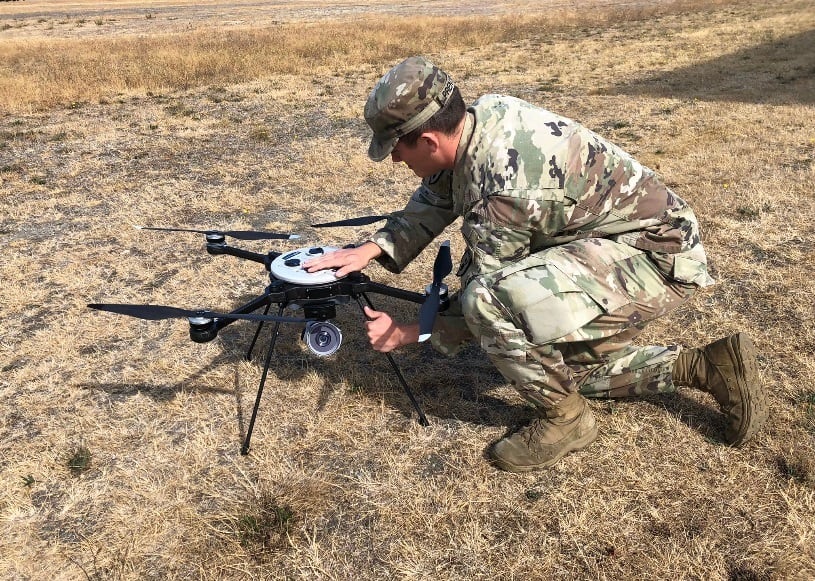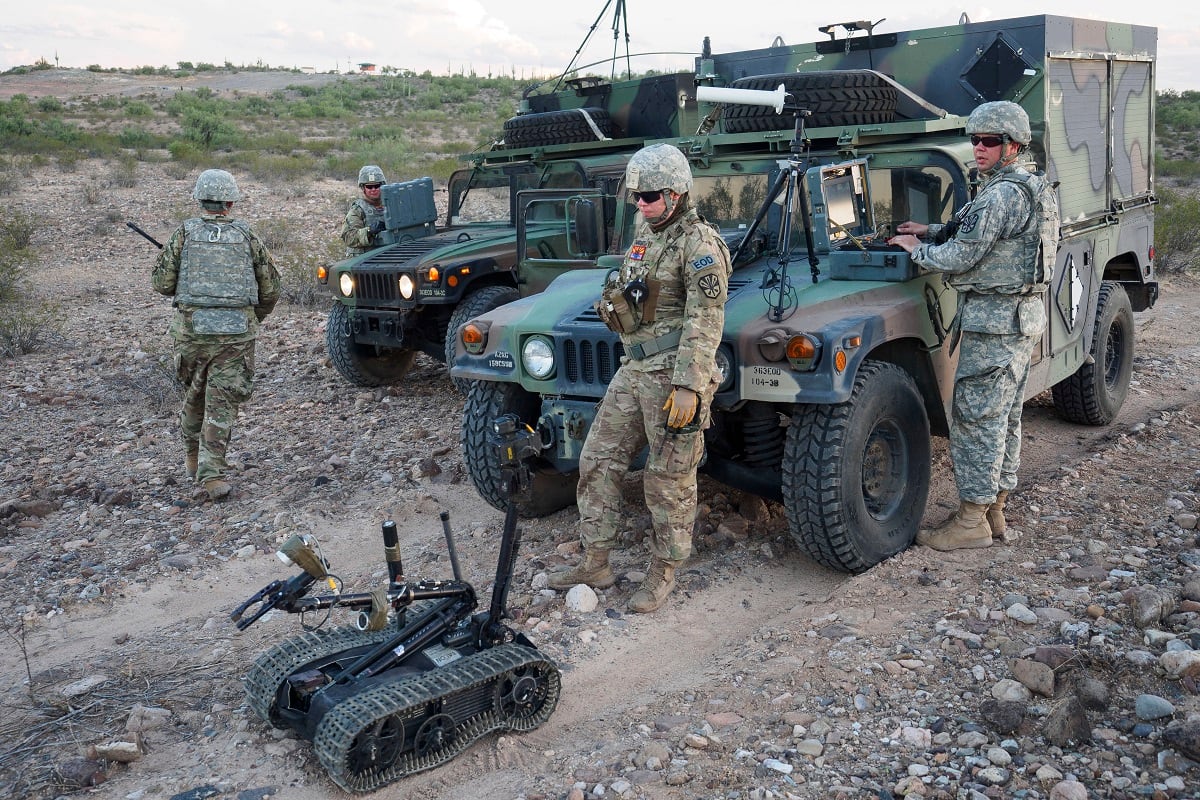Army explosive ordnance disposal units must shift their work to support large-scale combat operations at the division level and top EOD soldiers are mapping a way forward, according to an Army news release.
Representatives from the 52nd Ordnance Group out of Fort Campbell, Kentucky, and the 71st Ordnance Group out of Fort Carson, Colorado, met Dec. 7-9 for a planning exercise at Kinnard Mission Training Center at Fort Campbell, the release stated.
The main work of EOD will be to “enable lethality and freedom of maneuver while safeguarding” Army formations from what experts see as a host of new challenges and explosive threats on the modern battlefield, said Maj. Gen. Antonio Munera, commander of the 20th Chemical, Biological, Radiological, Nuclear and Explosives Command.
“The entire Army is facing the challenge of resetting to a large scale combat operations fight after two decades of counterinsurgency,” said Lt. Col. Michael Long, deputy director of the Training and Doctrine Command’s proponent office for EOD.
RELATED

Long has served 20 years in the Army and deployed to both Afghanistan and Iraq.
New technology under development with the Army Research Lab announced in 2020 is helping reduce false alarms on the battlefield, Army Times reported. Researchers said that on a typical minefield, EOD techs might hit 100 to 1,000 false alarms, slowing progress and presenting its own set of challenges to maneuver.
Augmented reality technology, displayed for Army Times in 2018, gives soldiers the ability to see heat and material signatures with goggles paired to metal detectors. Troops can then sweep areas and build a digital picture to locate buried threats, such as landmines or IEDs.
In September, Army Times reported on some of the Army’s newest small drones going to EOD techs to help find explosives hazards from the air before troops even arrive on scene.
The TRADOC EOD office, along with five EOD battalion commanders and 24 EOD company commanders, attended the exercise, as did elements of the Maneuver Support Center of Excellence.
RELATED

The team included more than 100 Army EOD techs, averaging a decade of experience each.
A detailed list of lessons learned, which were not provided in the news release, will inform the Army Techniques Publication 4-32 for EOD. That publication’s focus will be LSCO.
Some of the expected changes predate the post-9/11 Global War on Terror experience.
“The change comes with the shift to large scale combat operations with the great volume of expected explosive hazards, very large operational area and the mission command headquarters role in properly aligning and employing the EOD companies and teams,” said Long, deputy director of the TRADOC EOD office.
Previously common skills, such as rear area security, wet gap crossings, joint forcible entry and steady state operations, are back in the mix, said Lt. Col. Justin Gerron, with the 52nd EOD Group.
“The lessons learned from the past 20 years of counterinsurgency operations remain relevant because those threats will still be present in a large scale combat operations fight,” said Gerron, who has deployed to Iraq, Afghanistan and Kuwait. “However, the prevalence and emphasis placed on those threats is significantly less during the opening stages of large scale combat operations.”
Todd South has written about crime, courts, government and the military for multiple publications since 2004 and was named a 2014 Pulitzer finalist for a co-written project on witness intimidation. Todd is a Marine veteran of the Iraq War.





